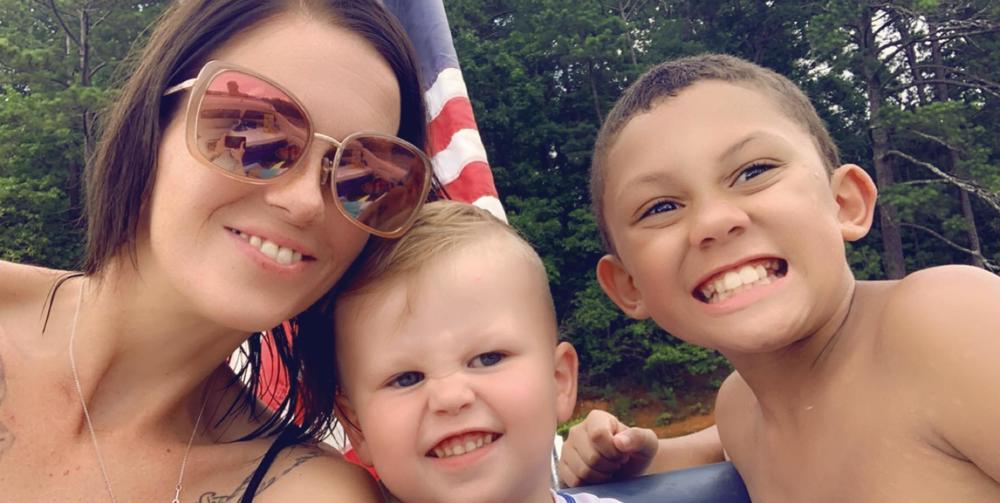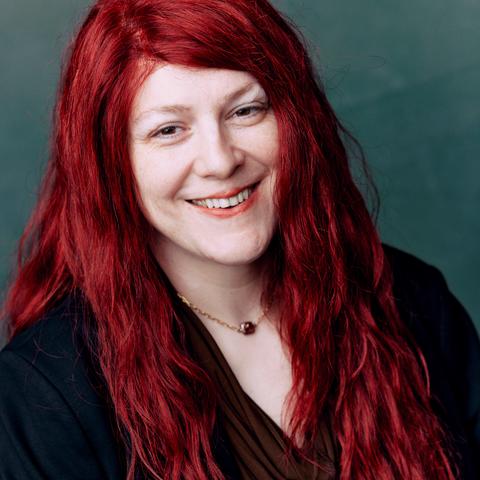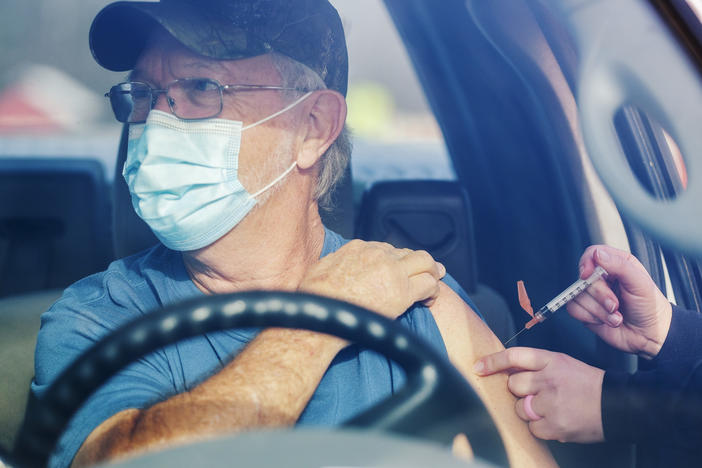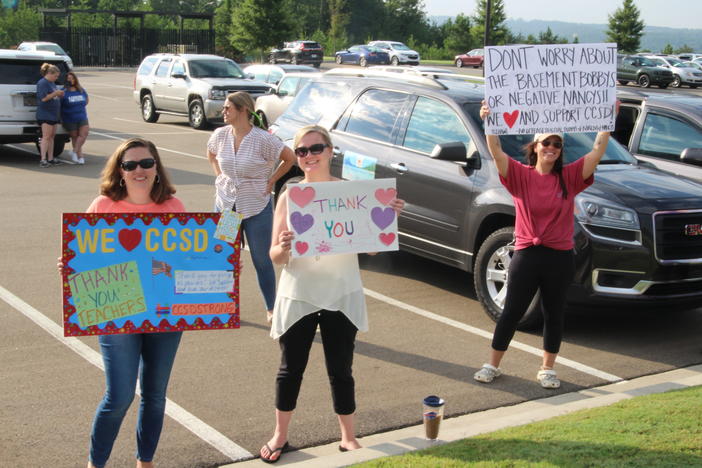
Section Branding
Header Content
Cherokee County Parents Withdraw Students From School, Plead For Online Instruction
Primary Content
It's been a rough start of the school year in some Georgia districts. Several schools had to shut down, and hundreds of students and staff are now quarantining because of the coronavirus. That has parents and schools wondering: what is the next best step in navigating education in the coronavirus era. GPB’s Ellen Eldridge has more.

Students in some Georgia districts returned to classes Aug. 3, and so did the coronavirus. A surge in COVID-19 cases forced the temporary shutdown of North Paulding High School as well as Etowah and Woodstock high schools in Cherokee County, officials said. More than a dozen other schools in Cherokee County have reported cases, resulting in hundreds of children the quarantining.
Still, some parents rallied this week supporting their school boards for allowing in-person instruction. Others now wish they had opted digital learning for their children to start the year.
Brittany Cooper sent her fifth-grader to school but regrets doing so now. Cooper’s daughter has special needs and an individualized educational plan that requires in-person instruction.
But just a couple of days into school, Cooper changed her mind and asked if her daughter could learn at home instead.
The school’s principal said the digital classrooms were all full.
“We sent her back (Monday)," Cooper said. "I don't know where to go or what to do. If digital learning is full, it's full, but I don't feel like that's fair.”
As the coronavirus has spread in schools, many parents, though not all, have changed their minds about face-to-face education during a pandemic.
Especially as pictures have come out showing students walking in crowded hallways.
RELATED: Emory expert: ‘It’s going to be hard to avoid outbreaks in schools’
The Fisher family in Woodstock chose to send their seventh grader, Jordan, to school.
Her parents sent Jordan to face-to-face classes because she was in all advanced classes.
"And for middle school and high school, the students would have been placed in the APEX system if they took digital learning instead of being placed with a teacher," Jonathan Fisher said. "So we knew that she would miss out on on all that advanced placement and would fall behind a year in our minds."
They also weighed the effects time out of school would have on Jordan's social experience.
“So we decided we were gambling a bit, thinking that the school would do something within the first week or two,” Fisher said.
The district did not mandate mask use even though hundreds of teachers urged for students be required to wear masks.
Brandy Heath’s son, Landon, saw problems on Day 1.
Students were changing classes seven times a day, going to busy gym periods and eating in crowded cafeterias, he said.
"I told my dad that I didn't really enjoy it," he said. "I didn't really like how unsanitary and how they were taking the precautions."
As the coronavirus cases came to light, Heath asked to switch to online instruction.
The district told Brandy Heath it was too late for that.
"So to hear that ‘We're not gonna help you, we don't care how you feel. We're doing everything possible to mandate safety precautions, and if you don't like it, then take your kid and go’ is basically what is being told to parents right now," Heath said.
Ultimately, Heath took her complaints to the local TV news. After that, her son was able to enroll in digital instruction. She set up a private Facebook group for parents in similar positions to advocate for their children.
As parents are learning, the coronavirus is changing safety protocol plans seemingly on a daily basis -- leaving students, teachers and others seeking creative solutions to educating kids this year.
Secondary Content
Bottom Content




